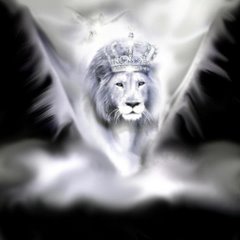
Scientists Find Trigger for Northern Lights
Scientists say they have discovered what makes the northern lights dance.
Researchers working on a NASA mission to understand the interplay of magnetic fields and charged particles blown outward from the Sun have identified the trigger for the colorful electrical storms in the polar regions. They hope this is a step in developing reliable forecasts of geomagnetic storms that can disrupt satellites in orbit and power grids on the ground.
The findings appeared in an article published Thursday on the Web site of the journal Science.
Scientists have long known that the dancing auroras of color known as the northern and southern lights are generated by charged particles flying from the Sun and interacting with the Earth’s magnetic field, which is then pulled into a windsock shape by the solar wind.
Turbulent storms on the Sun generate extremely bright auroral displays, but even in quieter times, smaller events known as substorms still generate the lights.
“They happen every three or four hours,” said Vassilis Angelopoulos, a professor of earth and space sciences at University of California, Los Angeles, and principal investigator of a NASA mission called Themis, short for Time, History of Events and Macroscale Interactions during Substorms. “The Earth’s environment stores energy. Then all of a sudden it releases it.”
Each substorm generates a current of about one million to two million amps over one to two hours, or a total energy equivalent to a magnitude-5 or magnitude-6 earthquake, Dr. Angelopoulos said.
Scientists knew two events that occur in the tail of the magnetic field during substorms, but did not know which event acted as the trigger for the auroras.
Over the past 30 years, some scientists have believed that a disruption in the current of charged particles — similar to the blowing of an electric fuse, the scientists said — about one-sixth of the distance from the Earth to the Moon’s orbit was responsible. Others believed it was a snapping of magnetic field lines farther out, about one-third of the distance to the Moon.
To answer the question, the Themis mission launched five identical satellites, each about the size of a washing machine, to measure the electric and magnetic fields as well as the particles passing by at different locations around Earth. Coupled with ground observations, scientists were able to deduce the order of events in a substorm in February.
The snapping of magnetic fields occurred first, followed by a burst of auroras. Surprisingly, the disruption in the charged particle current occurred after the aurora. Proponents of that hypothesis had thought that the magnetic snapping caused the change in electric current and that, in turn, led to the auroras.
“This defies our old paradigms,” Dr. Angelopoulos said.
Next, Dr. Angelopoulos said, scientists will try to figure out exactly why the magnetic field lines snap. With a better understanding of substorms, scientists would like to understand what happens during the larger storms. They hope to have better prediction methods working by the time the next peak of solar storms arrives between 2010 and 2012.
This is some really cool stuff. Regardless of what causes this whole light display and show, it is one of the most incredible things YOU will ever see. I cant wait to get somewhere close enough to see the display up close and personal.
The Universe Rules,






1 comment:
This is a beautiful display of intelligent design. I, too, look forward to one day seeing it for myself in person. Maybe we can share the experience together?
Love,
Shelain
Post a Comment